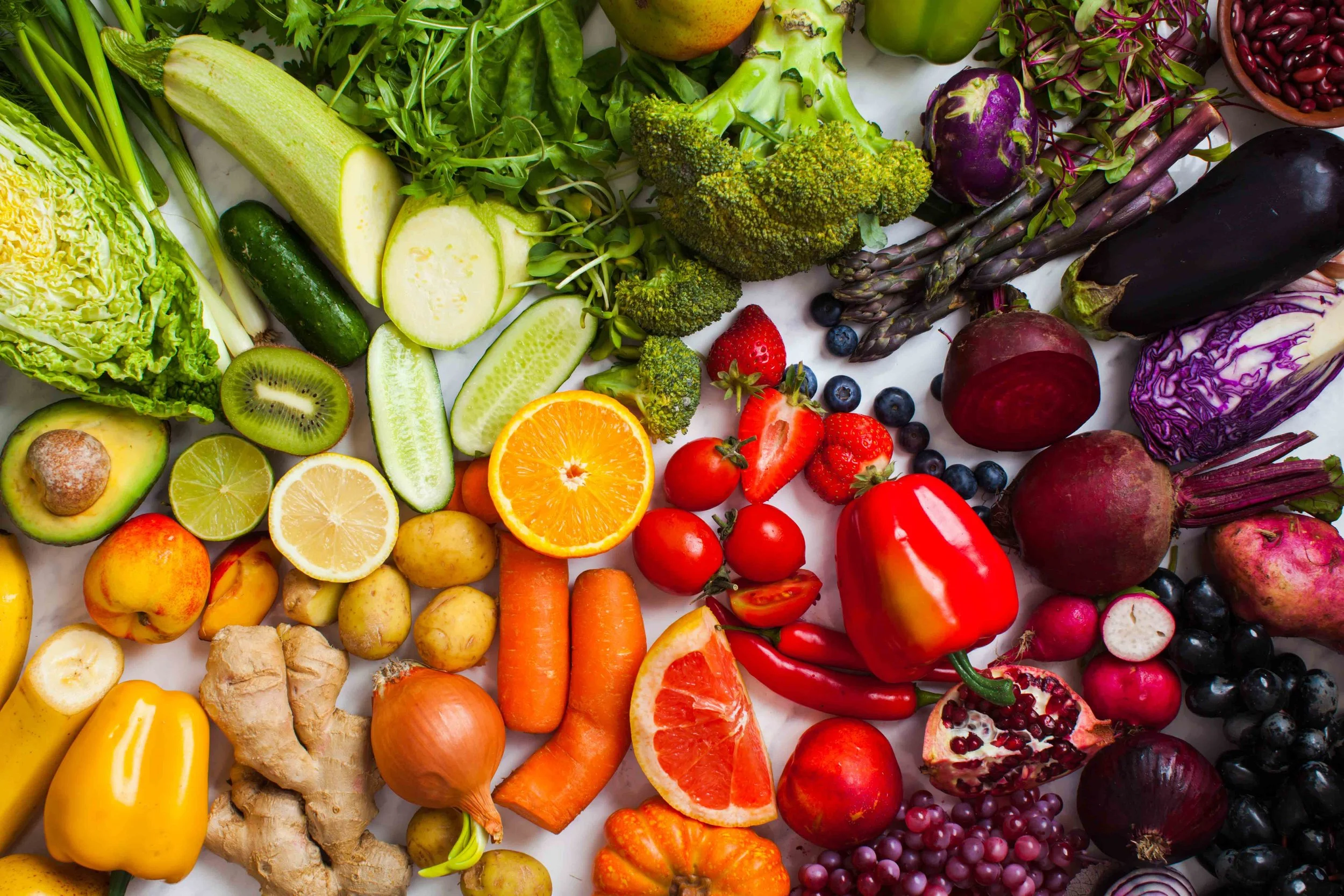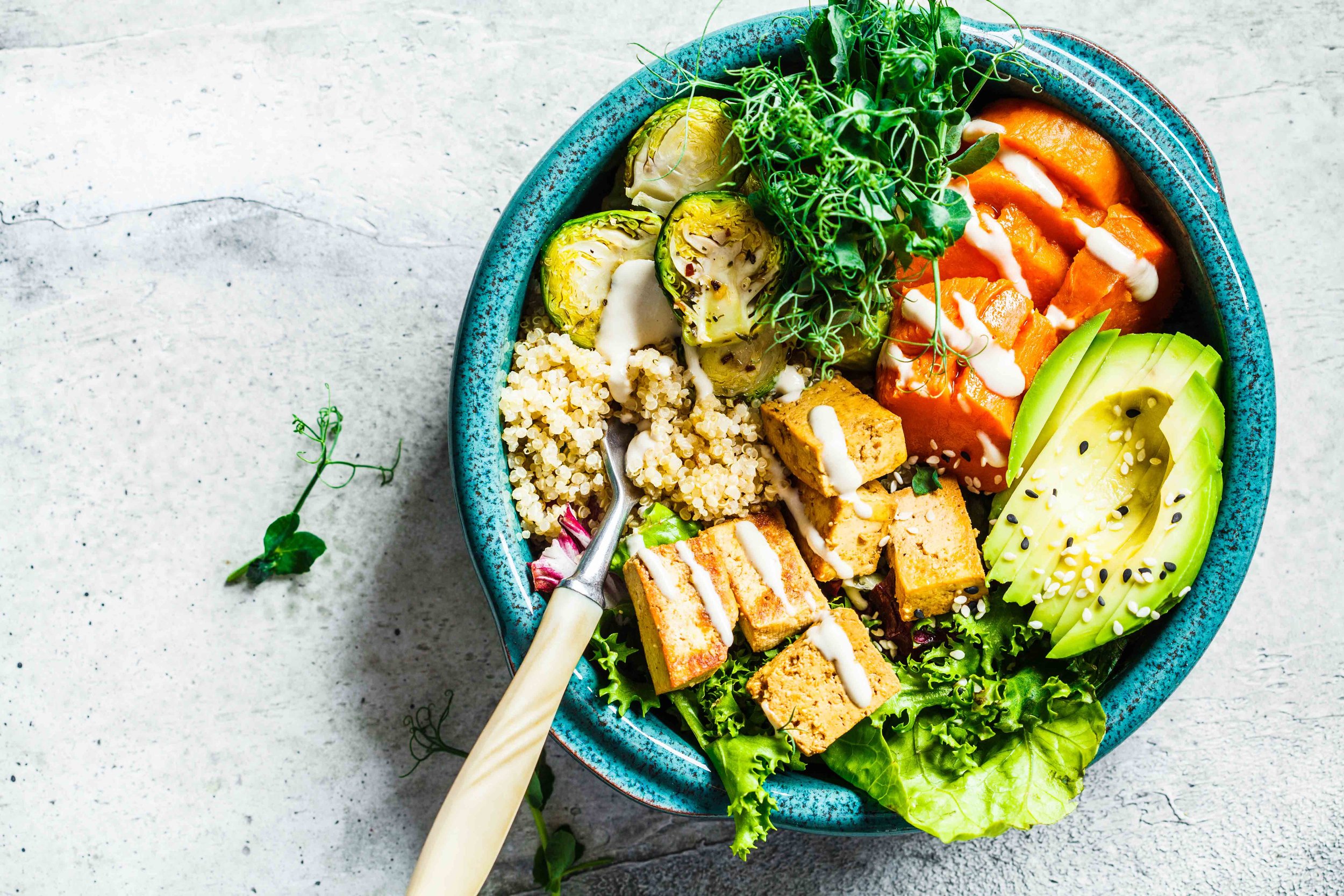Nutrition - The Myths & The Truths
March is National Nutrition Month making it the perfect time to talk about how you can start improving your relationship with food.
Human nutrition is a contentious and emotional issue. It is also a source of constant confusion for our patients. We get it. With so much contradicting information out there, nutrition can be one tough concept to wrap your head around but, it doesn’t have to be.
We’re here to help you simplify this topic by bringing you the real science, breaking the longstanding myths, and shining a light on the hidden superfoods that you might be leaving out of your diet.
Common Myths We’ve Been Told
We need a high protein diet
Plant-based proteins are incomplete proteins and therefore we must rely on animal proteins
In order to build muscle, we need large amounts of protein - mostly animal protein
Soy is bad for us and can lead to cancer and autoimmunity
Carbohydrates are bad for us and will cause you to gain weight
To get good fats into our diet we must do so through fish oil, olive oil, etc.
Plant-based diets lack good fats and most of us cannot make long chain omega-3 fatty acids, such as EPA & DHA
Where Lies the Truth?
I remember in the summer of 2014, The Institute of Functional Medicine had their annual conference on Nutrition. There was an interesting panel of 3 physicians who espoused varying diets for human health and had to reach a consensus on the optimal amount of plant vs. animal foods in our diet.
Joel Fuhrman, MD, represented the Whole Food, Plant-Based diet
Mimi Guarneri, MD, a cardiologist, represented the Mediterranean diet
Loren Cordain, PhD, the founder of the Paleo diet, represented the High-Protein diet
The moderator forced them to reach a consensus at the end of an hour and this is what resulted:
85% of the human diet should be centered on a plant-based diet that is not processed.
15% can come from animal protein.
Yes, even Loren Cordain admitted that plants and vegetables were very useful to repair tissue and provide a plethora of nutrients that we can only get indirectly from eating high in the food chain, which are animals and fish.
Breaking Down the Science
Now let’s take a look at what 15% animal protein in a daily diet actually looks like. Let’s start by looking at calories.
Carbohydrates provide 4.5 calories per gram
Proteins provide 4.5 calories per gram
Fats provide 9 calories per gram
To simplify the math, let’s start with breaking down 1000 calories per day. If you were to follow a diet of 85% plant-based and 15% animal protein, 15% of your diet would be 150 calories per day. On average diets are around 2000 calories per day, which would be 300 calories. Here is what those servings size actually look like:
4 ounces of chicken breast gives = 300 calories
4 ounces of 85% fat ground beef = 280 calories
2 eggs = 156 calories
Therefore, the average person eating 2000 calories/day, following the 85/15 diet would reach their limit with 2 eggs and 2 ounces of chicken breast each day.
It’s important to understand that animal proteins come with fats and have zero carbs or fiber. Plant proteins comes with carbohydrates and fiber, and on average 10-12% fat, unless you are eating nuts and avocadoes. Therefore fat, no matter animal or plant-based, will always give you double the calories. In addition, plants come with the added benefit of fiber, anti oxidants, vitamins and phytonutrients that talk to your genes.
If you want to lose weight or want to eat an anti-inflammatory diet and are going with the calorie theory, you will need to eat more protein and carbs. The combination that does that with a lower fat content is a plant-based diet. But calories are not the only thing that matters in our diet, so let’s keep breaking this down further.
Macronutrients & Micronutrients
There are 3 main staples in our diet referred to as Macronutrients. These are carbohydrates (“carbs”), fats and proteins. They are called macronutrients because we need a larger amount of these in our diet. Macronutrients provide calories, which give our bodies energy, carried by a molecule called ATP. ATP carries energy to our cells to run all of our metabolic reactions allowing our bodies to properly function.
However, these metabolic reactions cannot happen alone, they are controlled by enzymes which need cofactors to work. These cofactors are minerals, vitamins and phytonutrients. These we call these Micronutrients as we need smaller amounts of these in our diet.
Micronutrients are largely provided by plant-based foods, that should comprise 85% of our diet. Let’s look at a few of these and what they do.
Fat Soluble Vitamins A, D, E & K:
Vitamin A - needed for good vision, immunity, healthy skin, and also allows hormone receptors to become more sensitive to hormones they need to sense
Vitamin D - required for a healthy immune system, healthy bones, healthy brain, and has over 300 functions in the body
Vitamin E - an antioxidant and can help protect cells from damage from the very act of making energy
Vitamin K - prevents blood clots, helps shuttle calcium into bones, and helps maintain the integrity of our vascular lining cells called the endothelium
Water Soluble Vitamins B, C, and Minerals:
B Vitamins - necessary to extract energy from food especially B2 and B3. B12 is important for proper nerve function and is used to make red blood cells. Vegans can lack this vitamin and it becomes essential to supplement.
Vitamin C - a very potent antioxidant and maintains a healthy a strong immune system. Humans do not make vitamin C and therefore it has to come from our diet and is 100% from plant-based foods.
Minerals - lets take a look at a few:
Calcium - needed for making microcurrents in our cells along with magnesium, needed for muscle contraction and bone formation
Magnesium - regulates nerve transmission, muscle contraction, generates cellular microcurrents to power the cells, helps form teeth and bones, helps with proper brain function and sleep, and is involved in hundreds of metabolic reactions
Sodium - required for the making of microcurrents in our cells along with potassium. Too much sodium can cause us to swell and can also lead to irritability.
Potassium - needed for muscle contraction, nerve conduction, and maintenance of fluid and electrolyte balance with the help of sodium and chloride
Iron - required for transport of oxygen in the body and making thyroid hormones
Zinc - required for many hormones to work and helps the immune system
Phytonutrients:
A great way to start with phytonutrients is this article from Deanna Minich, PhD - A review of the science of color in foods:
“Newer research now suggests that phytonutrients play significant roles beyond their protective, antioxidant activity. They have been shown to have functional and structural capacities, in addition to being cell signaling agents and messengers and modifying telomerase activity, as well as partaking in epigenetic changes through histone modification and demethylation. Due to their ability to address multiple mechanisms simultaneously, phytonutrients may be especially helpful in chronic diseases”, and that eating plants with high phytonutrient variety is highly beneficial to prevent chronic disease partly through their ability to help us remove toxins as well as help with psychological well being.”
The simplest way to think about this category is to think of the color in food. Check out the phytonutrient chart from the Institute of Functional Medicine that we share with our patients for foods that you can learn to love and rotate. This is a great source to print out and help guide you to begin adding more color and variety to your diet.
I have not even begun to scratch the surface of the 25,000 studied phytonutrients. Let it suffice to say that if we are counting phytonutrients, we may have only scratched the surface of our understanding as more are being discovered every year. Therefore, it makes a whole lot more sense to eat a wide variety of these colorful compounds and whenever possible get them locally and seasonally.
Why is all this interesting? Because across studies, the consensus is that eating a colorful plant-based diet will help to prevent multiple chronic diseases, and supply you with adequate micronutrients, with the exception of B12 in vegans. It did not matter if one were looking at weight loss, diabetes, cancer, autoimmunity or any other disease, it was plant strong diets that helped the most.
Which Diet Do We Recommend and Why?
My suggestion is to aim for the high road of a 100% plant-based diet to allow yourself the freedom to “cheat” hitting more in the direction of 5-10% animal-based foods. It is a fact that when you give yourself an inch, you are likely to take a mile and this is the same with food choices. If you allow a lot more animal protein to creep in, it always will, and you will find it hard to say no.
What about those who bloat from legumes and grains?
There are some people who feel that they cannot tolerate legumes and grains due to bloat whether it be from lectins or other gut issues. For them, I suggest working with a functional medicine practice who believe in a plant-based approach to slowly work your gut bacteria to handle these foods better. You may have to go slow and stay with more vegetables, fruits, seeds and nuts initially and as we help you discover what the issues are, you will be able to eat more grains and legumes.
What about the high amount of carbs?
What you should understand is that carbs are not bad for you if you are able to tolerate them and eat them in their whole form instead of refined carbohydrates, such as simple sugars and white flour products.
Many on a plant-based diet are eating greater than 60% carbohydrates, and they feel satiated, do not need to cheat and also keep trim. They are able to maintain their muscle health by working out regularly and by taking time to chew their protein. Yes, chewing well is truly a way to enhance absorption of protein or nutrients to your fitness level. The more physical, the more you can build muscle by taking time to chew. The less physical will use the calories and protein where they are needed most. An example of this would be as in brain function for critical thinking abilities.
Should you be avoiding soy?
Let’s finally break the stigma around soy. Studies have shown that soy, in its whole form, (the bean, soy nuts, tempeh, tofu and soymilk) actually prevents chronic disease and helps prevent cancer. This does not hold as true for isolated soy protein products, such as protein powders. It is the phytonutrients in soy called daidzein and genistein that actually do the hard work of working with your epigenetic modulation, and not just the protein. Of course, sourcing a clean, non-GMO, organic form is most beneficial.
What makes a fat a “good fat”?
Without thinking about omega 3s, 6s and 9s, think about animals feeding themselves in the wild. What fats are they eating when they are plant-based? It is mostly seeds and nuts in a wide variety. Not their oils, like sunflower oil, sesame oil or walnut oil, but the nuts and seeds in their whole form.
It does help to minimize oils as they have a very high oxidation ratio. Oils are subject to changes called hydrogenation, oxidation and trans fat formation, in both their seed form and when they are pressed. When pressed this process becomes almost 3-4x higher. This means that you will need to eat a whole lot more phytonutrients and other micronutrients to prevent the damage that they can incur in the body. The lining of your blood vessels take the biggest hit quickly. This is why a high fat diet can lead to coronary artery disease and high cholesterol.
Fats taste good and so it is used to build flavor into food. However, you can do this through whole foods by using nuts, seeds, their butters and their milks. Most vegetables contain about 10-12% of fats naturally. Higher fat foods, such as avocadoes, are also delicious but should be eaten mindfully and in smaller amounts. If you choose to use oils, use them sparingly, choose the best quality available, such as organic cold-pressed olive oil, and try to use this without heating methods, such as in vinaigrettes or in low heat crock pot cooking.
Hopefully this overview of nutrition has given you a wider lens with which you view foods. Do cultivate the habit of visiting your local farm stands and farmer’s markets that use healthy techniques to grow their foods. Don’t be afraid to pick up a new variety of fruit or vegetable to try each week. The internet is full of recipe options to try and you can never go wrong with a quick roasting or sauteing of a veggie to bring out it’s natural sweetness and flavors.
CSAs (Community Supported Agriculture- where you prepay for your produce for the season to help support the farmer growing your food) are a great option to explore new veggies and learn how to eat with the seasons, rotate your diet and feel a sense of connectedness to where your food comes from. Nutrition does not have to feel confusing or overwhelming, when you stick to what’s fresh and in season and eat the rainbow.





